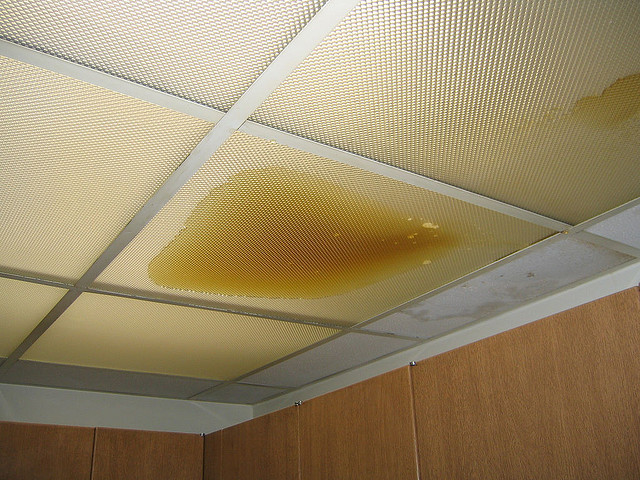Overview To Water Leakage Detection At Home
Overview To Water Leakage Detection At Home
Blog Article
We've stumbled on this article on Leaking water lines below on the net and believe it made perfect sense to talk about it with you on this page.

Early detection of leaking water lines can alleviate a prospective catastrophe. Besides conserving you cash, it will certainly minimize the stress as well as irritation. The moment you discover a leakage, calling your plumber for repair services is the very best option. Some tiny water leakages might not be visible. If you can not detect it with your nude eyes, right here are some hacks that assist.
1. Analyze the Water Meter
Inspecting it is a guaranteed way that helps you uncover leakages. If it relocates, that indicates a fast-moving leak. This suggests you might have a sluggish leak that can also be underground.
2. Examine Water Consumption
Analyze your water expenses and track your water intake. As the one paying it, you must notice if there are any kind of inconsistencies. If you spot sudden changes, regardless of your consumption coinciding, it implies that you have leakages in your plumbing system. Keep in mind, your water bill must fall under the exact same array each month. An abrupt spike in your expense shows a fast-moving leak.
At the same time, a constant increase monthly, despite the exact same behaviors, reveals you have a slow-moving leakage that's additionally gradually rising. Call a plumber to extensively inspect your building, specifically if you really feel a warm area on your flooring with piping beneath.
3. Do a Food Coloring Test
When it comes to water usage, 30% comes from toilets. If the color in some way infiltrates your dish during that time without flushing, there's a leak in between the tank as well as dish.
4. Asses Outside Lines
Do not forget to check your exterior water lines as well. Should water permeate out of the connection, you have a loosened rubber gasket. One small leak can lose lots of water and increase your water bill.
5. Evaluate as well as Analyze the Situation
Homeowners must make it a habit to inspect under the sink counters and also even inside cupboards for any kind of bad odor or mold growth. These 2 warnings indicate a leak so timely focus is required. Doing regular inspections, even bi-annually, can save you from a significant issue.
If you understand your home is already old, maintain a careful eye on your heating systems, tubes, pipelines and so on. Look for stainings and also damaging as the majority of pipelines as well as home appliances have a life expectancy. They will certainly additionally normally weaken due to damage. Don't wait for it to rise if you presume leaking water lines in your plumbing system. Call a specialist plumber today so you don't wind up with an awful mess in your house.
Early discovery of dripping water lines can mitigate a prospective catastrophe. Some little water leakages may not be visible. Inspecting it is a guaranteed means that aids you uncover leakages. One tiny leak can squander lots of water as well as surge your water expense.
If you believe dripping water lines in your plumbing system, do not wait for it to rise.
How to Know If Your Home Has a Hidden Leak
Water Meter Reveals Inexplicable Water Usage
If you’d like to test whether or not there’s a leak somewhere in your home, you can do this using your water meter. Here is how to conduct the test:
Don’t use any water in your home for at least 30 minutes; this also means not turning on faucets or water-using appliances.
Go outside, and check your water meter for activity.
If your water meter shows that there was activity, even though no one was using any water, this proves that there is a leak in your home.Visible Mold or Mildew Growth
Leaks behind walls create moist, dark environments that allow mold and mildew to grow and thrive. Eventually, you might see mold growth forming on the wall closest to a hidden leak.
If mold is growing in an area that receives a high amount of moisture, such as a bathroom, it may simply be an indication that better ventilation is needed. However, if you see mold growth on a wall or the ceiling in an area where you would not expect, you probably have a hidden leak.
Musty, Mildew Odor
Sometimes you might not be able to see the mold or mildew that is growing as a result of a leak. However, the smell can give the problem away just as easily. If you catch a whiff of something musty, there’s a good chance that old water is collecting somewhere in your home that you can’t see.
Stained/Warped Walls, Ceilings, or Floors
When your home soaks up water, a variety of red flags can become visible, including ceiling stains, bubbling drywall, warped walls, and sagging floors. While these issues can be caused by excess humidity, they can also be signs that a pipe or plumbing connection has started leaking behind your walls.
Inexplicably High Water Bill
After a while, you get a general sense for what your water bill should be. If you own a pool or sprinkler system, your bill will tend to be higher during summer. However, if you receive a water bill that seems especially high, and you can’t figure out what caused it, then you may have a hidden leak somewhere that’s increasing your bill.
https://www.plumbingjoint.com/blog/2019/july/how-to-know-if-your-home-has-a-hidden-leak/

I discovered that piece of writing about Leaking water lines while surfing around the web. Sharing is caring. One never knows, you may very well be helping someone out. Many thanks for your time. Don't forget to check up our website back soon.
Report this page